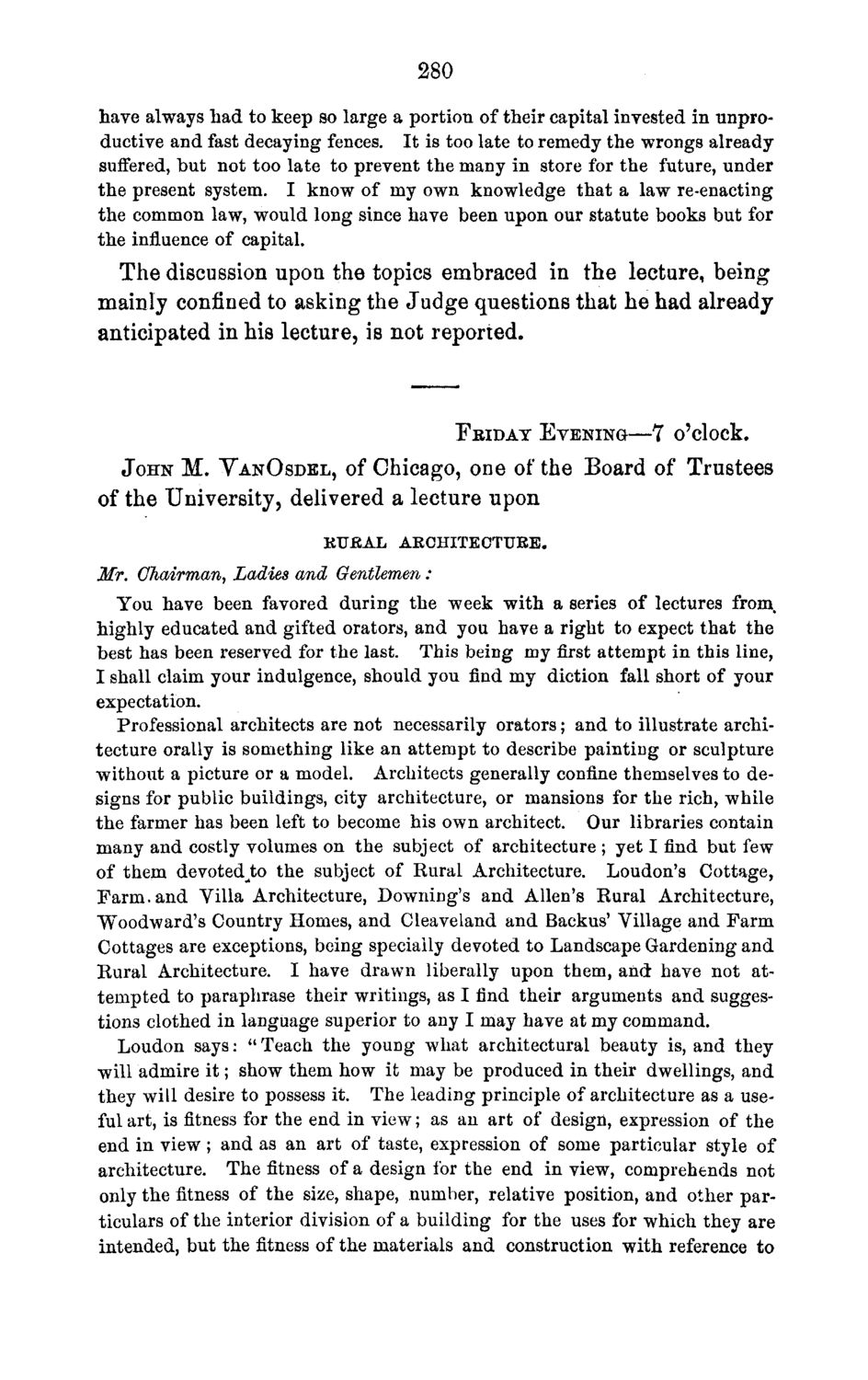| |
| |
Caption: Board of Trustees Minutes - 1870
This is a reduced-resolution page image for fast online browsing.

EXTRACTED TEXT FROM PAGE:
280 have always had to keep so large a portion of their capital invested in unproductive and fast decaying fences. It is too late to remedy the wrongs already suffered, but not too late to prevent the many in store for the future, under the present system. I know of my own knowledge that a law re-enacting the common law, would long since have been upon our statute books but for the influence of capital. The discussion upon the topics embraced in the lecture, being mainly confined to asking the Judge questions that he had already anticipated in his lecture, is not reported. FRIDAY EVENING—7 o'clock. M. YANOSDEL, of Chicago, one of the Board of Trustees of the University, delivered a lecture upon JOHN RURAL ARCHITECTURE. Mr, Chairman, Ladies and Gentlemen: You have been favored during the week with a series of lectures from, highly educated and gifted orators, and you have a right to expect that the best has been reserved for the last. This being my first attempt in this line, I shall claim your indulgence, should you find my diction fall short of your expectation. Professional architects are not necessarily orators; and to illustrate architecture orally is something like an attempt to describe painting or sculpture without a picture or a model. Architects generally confine themselves to designs for public buildings, city architecture, or mansions for the rich, while the farmer has been left to become his own architect. Our libraries contain many and costly volumes on the subject of architecture ; yet I find but few of them devoted^to the subject of Rural Architecture. Loudon's Cottage, Farm, and Villa Architecture, Downing's and Allen's Rural Architecture, Woodward's Country Homes, and Cleaveland and Backus' Village and Farm Cottages are exceptions, being specially devoted to Landscape Gardening and Rural Architecture. I have drawn liberally upon them, and have not attempted to paraphrase their writings, as I find their arguments and suggestions clothed in language superior to any I may have at my command. Loudon says: " Teach the young what architectural beauty is, and they will admire it; show them how it may be produced in their dwellings, and they will desire to possess it. The leading principle of architecture as a useful art, is fitness for the end in view; as an art of design, expression of the end in view; and as an art of taste, expression of some particular style of architecture. The fitness of a design for the end in view, comprehends not only the fitness of the size, shape, number, relative position, and other particulars of the interior division of a building for the uses for which they are intended, but the fitness of the materials and construction with reference to
| |